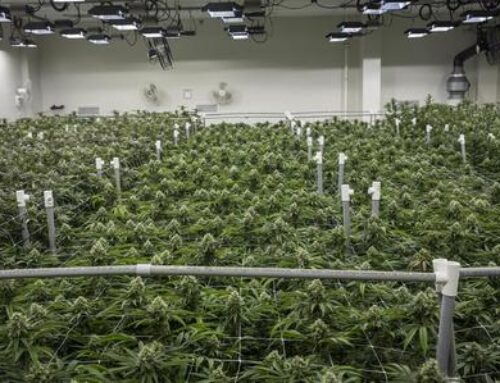We got our first ride in the electric Lucid Air sedan
June 21, 2021
The stylish and spacious electric sedan goes into production later this year.
ack in 2017, I got my first face-to-face encounter with a Lucid Air when the startup electric vehicle-maker Lucid brought one of its early prototypes to Washington, DC. Lucid’s EV combined distinctive styling with some innovative packaging, and the company’s technical team lead was previously the Tesla Model S’ chief engineer.
Lucid’s production timeline slipped a bit from its original plan—investors are much less reticent about putting their money into EV startups than they were in 2017—but the company is on track to begin deliveries of the Air later this year. And on Sunday, I was fortunate enough to go for a ride in one of Lucid’s current prototypes to see how things have changed.
From the outside, the Air looks like little else on the market. It sports a smooth shape, with a relatively long hood and a short trunk, accented by the polished aluminum pillars that frame the glasshouse. Superficially, it looks similar to when I first saw it, but many of the details have changed along the way to produce what may well be a class-leading drag coefficient of just 0.21.
“It’s an interesting package because the car is actually physically smaller than a Porsche Taycan in length and smaller than Tesla Model S, believe it or not,” Derek Jenkins, Lucid’s SVP of design and brand, told me. “And yet we managed to get [Mercedes-Benz] S Class legroom in the rear. And that’s really our strategy: more compact, agile—a more youthful car on the outside. But still, who doesn’t want tons of space? I think that’s a pretty universally appealing trade.”
The changes to the interior are much more apparent, starting with the curved display (called the Glass Cockpit) in front of the driver that replaces three separate screens that were previously arrayed in the same space. “As we move toward production, the technology evolved so fast, and we had the opportunity to go with a curvature,” Jenkins told me. “[The benefit is that] it contours the screen. So if you were to use a sweep of your eye, it’s equidistant all the way [from one corner of the display to the other], and [it’s] really good for reach and just gets a very seamless look,” he said.
The Air’s Glass Cockpit is free of a binnacle or hood, something we’ve also seen on the Taycan; improvements in anti-glare coatings and an increased brightness make that possible, according to Jenkins.
The Human-Machine Interface is crisp and readable without being needlessly flashy—a bit like the rest of the Air. On the left of the Glass Cockpit display are vehicle controls, like the lights, windshield wipers, and defrosters. The center of the 34-inch screen is a minimalist main instrument display where you’ll see your speed and range. Infotainment functions live on the right of the Glass Cockpit.
There’s also a second screen, called the Pilot Panel, on the center console. You can swipe menus from the Glass Cockpit to the Pilot Panel, at which point they expand, and you can also interact with things like the seat settings here. In a clever touch, the iPad-like Pilot Panel can retract into the console, providing access to a storage cubby behind it.
Another immediately obvious change is the back bench seat, which replaces the pair of reclining seats we saw in the early prototype. While the seats were undoubtedly flashy, US customers mostly want a rear bench, so those recliners are still a work in progress as Jenkins’ team refines the packaging.
Lucid isn’t quite ready to let me behind the wheel of an Air—expect that later this summer—but I did get to experience the car from the front passenger seat as Jenkins drove me around Amelia Island for about 30 minutes.
The prototype was configured as the Grand Touring version of the Air; this model has a pair of electric motors with a combined 800 hp (597 kW) and a range of 517 miles (813 km). And yes, it feels like each and every one of those horses (or watts) was present and correct. This is a seriously fast EV, with a 0-60 mph time of 3 seconds (although Jenkins said he’s much more proud of how quickly the car can accelerate from 40 mph compared to the competition). And it’s not even the fastest version—that honor goes to the 1,080 hp (805 kW) Dream Edition.
The ride was comfortable, and while the Air makes the low-speed pedestrian noises all EVs are required to make, nothing is piped into the cabin. That means riding in an Air is a mostly calm and serene experience, at least until the driver floors the throttle.
After my first encounter back in 2017, I was impressed with how well-built the Air was. Despite being an alpha prototype, everything I poked or prodded worked, including the three screens and their UI. But the car I rode in this past weekend felt like a huge step beyond that earlier experience in every regard.
Lucid is currently building a batch of 70 preproduction cars, with another run of 100 that, among other things, will be used for PR and marketing. And I can’t tell you how curious I am to drive one of them.
Listing image by Jonathan Gitlin
Search
RECENT PRESS RELEASES
Polaris Renewable Energy to host Q2 2025 earnings call on July 31 By Investing.com
SWI Editorial Staff2025-07-07T23:48:00-07:00July 7, 2025|
HIVE Digital’s Bitcoin Production Jumps 18% as Massive Paraguay Expansion Targets 25 EH/s
SWI Editorial Staff2025-07-07T23:46:51-07:00July 7, 2025|
HIVE Digital Technologies Surges 18% in Monthly Bitcoin Production as Phase 2 Paraguay Exp
SWI Editorial Staff2025-07-07T23:46:44-07:00July 7, 2025|
Bitcoin scammers score $30K-plus from Beaumonters
SWI Editorial Staff2025-07-07T23:46:26-07:00July 7, 2025|
BTC, XRP, DOGE, SOL News: Bitcoin Traders React to Trump Tariffs, With Slides on Dogecoin
SWI Editorial Staff2025-07-07T23:46:20-07:00July 7, 2025|
Strategy Reports $14.05 Billion Unrealized Gains on Bitcoin Holdings
SWI Editorial Staff2025-07-07T23:46:16-07:00July 7, 2025|
Related Post




